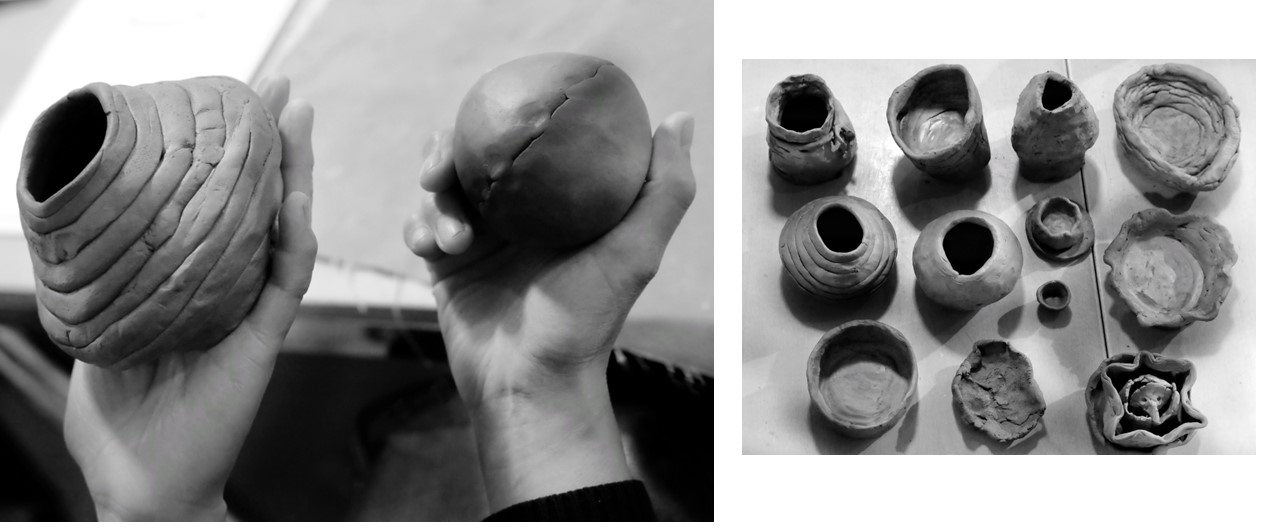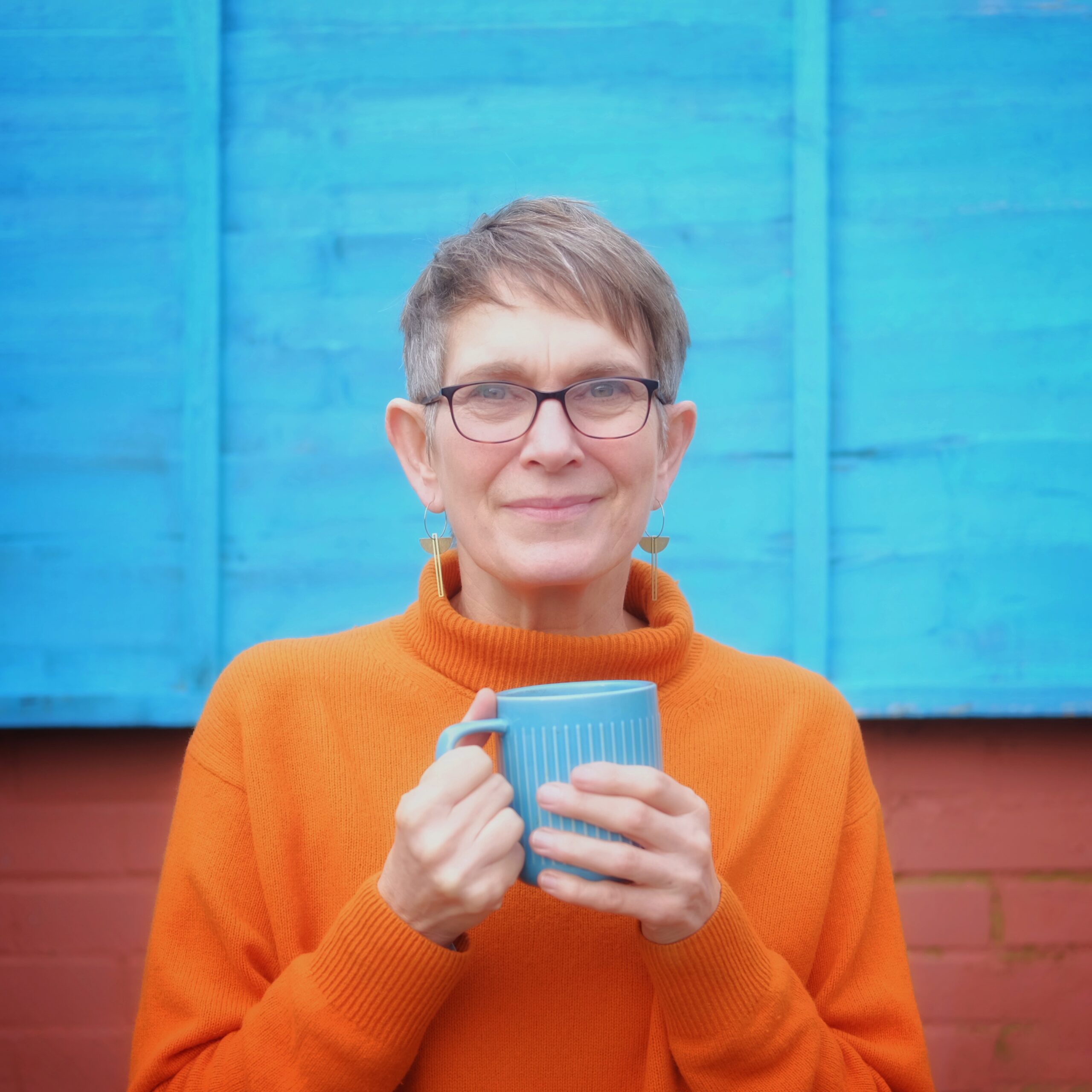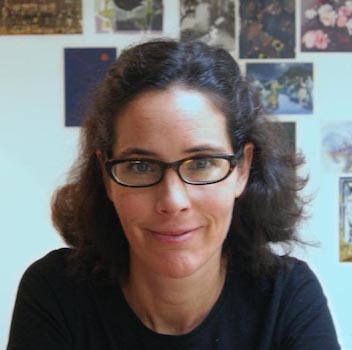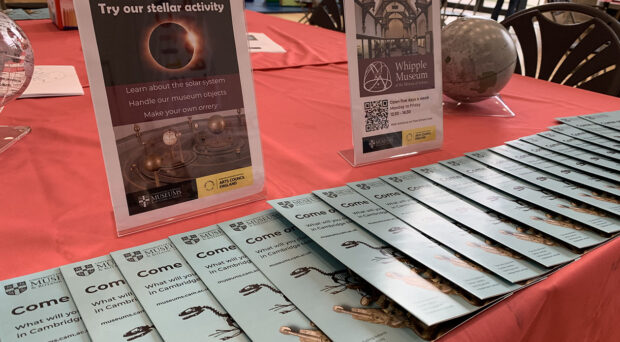In March and April 2022, two inclusion events were held at the Fitzwilliam Museum in response to Magdalene Odundo in Cambridge, a show curated by Dame Magdalene Odundo, one of the greatest ceramic artists working today, and featuring global ceramics from the Fitzwilliam and Museum of Archaeology & Anthropology collections alongside her own work.
We shared photographs from the two events with Magdalene, who continued the conversation with this response:
“As an artist there is no better endorsement than seeing one’s work reflected, appraised, and interpreted in workshops led by educators in museums and galleries. I was emotionally overwhelmed to see work made at the Fitzwilliam by blind and partially sighted people. The pots and bowls from the clay workshops, and the photographs from the dance sessions prove that art has a powerful haptic essence that can amaze and communicate so much to all of us especially in our personal lives.”
Magdalene Odundo
Inspired by this conversation, what follows are observations, images, and feedback from the two events, which are part of the Dance & Time with the Museum programme and our creative programme for blind and partially-sighted adults.
Dance with the Museum, March 2022
Programme artist Filipa Pereira- Stubbs shares her intent and the experience of leading people in this invitation to, as a session participant described it, ‘bring our whole self to the museum’.
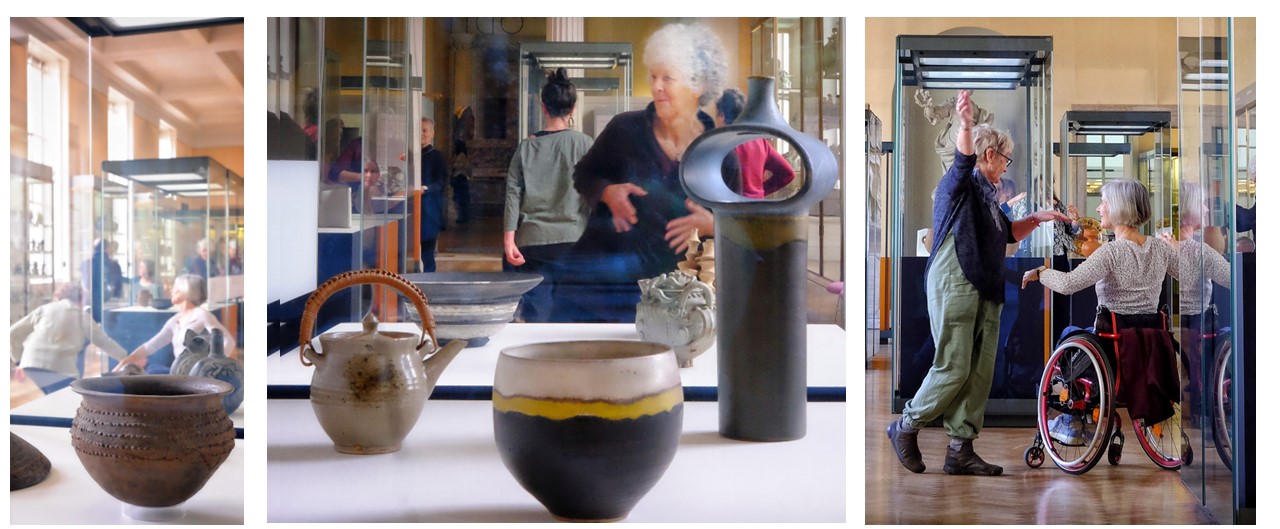
I was inspired by the way Magdalene Odundo’s work changed the dynamics of the porcelain room in the Fitzwilliam. Normally a room I would move through without being called to stop, on the way somewhere else, through her interpretation this room became a striking space of colour, shape, and relationship. Spacious and seemingly simple, Odundo gathered pots loved in her student days, and rekindled their vitality by bringing them alongside her own pots; she gave them permission to enter into relationship across time and culture, through the viewers imagination and curiosity.
I wanted the dancers to engage with that inter-subjectivity and inter-relationship and relish the luxury of having a gallery room as a studio space to explore and be inspired.
“I actually found the difference between the lightness of those cups and saucers and plates and the more heavy, heavier pots, wonderful. And I found oh there’s a place for fusion…in my body…because I didn’t have to go all dark and a heavy, and I didn’t have to spring around either in relation to the pots. I don’t know much about pottery or anything, but I found the way the fusion, the contrast that could be embodied quite interesting.”
Judy, session participant
I invited the dancers to explore themes introduced by Odundo – what is a pot for – thinking of its function, thinking of ritual. A bowl broken before burial. A bowl given as a wedding gift. A bowl to carry nourishment. Thinking about the space within, and the space surrounding the bowl. Standing or sitting, absorbing the movement inherent in the bowls and pots, we explored becoming the bowl, feeling for the weight, balance, poise. Odundo wrote about her pots being anthropomorphic, I wanted the dancers to bring the pots into their bodies.
We were also inspired by the patterned or burnished state of the pots – how to create the rhythm of these through movement, spatially and gesturally…. we considered all the voices a body holds – and what a vessel might contain – emotions, feelings, stories, narratives. What traces can still be articulated across time.
Gradually theme by theme, response by response, the dancers were building a choreography that could embody the room, the pots, and the excitement of Odundo’s curatorship. Eclectic music accompanied the explorations and lent rhythms and musical frames for the improvised movement to shape into dance.
“Usually, you’re not free to respond. You look seriously and you speak quietly to the person next to you, so this was just so wonderfully freeing.”
Cathy, session participant
What I saw was a group of bodies excited and stirred by this opportunity to dance in direct proximity to the pots. Undisturbed by the usual gallery visitors, the traditional quiet pacing through a space, here we were able to slow down, take the space and time. Imaginations were fired and life experiences expressed. For mature non-trained dancers, the movements carried personal meaning, and articulated personal experience. A rare opportunity to create raw improvised dance – unrehearsed, the opposite perhaps of smooth – but nourishing and joyous.
“It felt very appropriate to dance in a contained space – it echoed the containment of the pots themselves. And it was an absolute joy to be able to dance with that constant stimulus. Rather than just looking at something and then going away from it, the stimulus is there all the time so you can keep referring back to it. Brilliant.”
Ann, session participant
Looking on, Ruth Clarke shares the experience of observing and capturing the session through the camera’s lens.
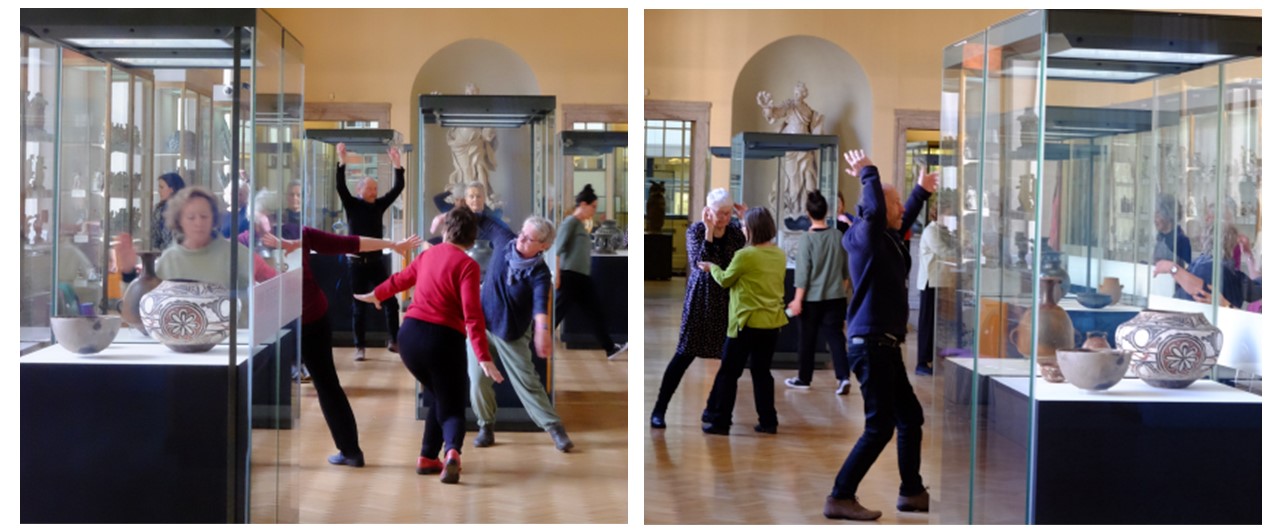
The gallery space Odundo’s exhibition is being shown in is long with high ceilings, pale walls, and large windows. that run almost entirely along one of its walls casting a strong, bright light onto the glass display cases and artefacts.
Looking through the glass display cases and observing the artefacts and the dancers, framed as one, revealed curves, angles, and rhythms which at points echoed the visual stimuli and at times reacted to it. Sometimes the dancer would be having their own, almost private conversation with an object and at other points, the objects appeared to be holding the dancers together, almost as one form, moving between and amongst the objects. This created new relationships and compositions in the space, shifting, and altering curated compositions.
The resulting images of this session are ones rich in form, connection, narrative, and energy, with an honesty, elegance and excitement that speaks beautifully to Odundo’s own work and the pieces she selected for this show.
Creative workshops for blind and partially sighted people
The joyful ceramic world of Magdalene Odundo, April 2022
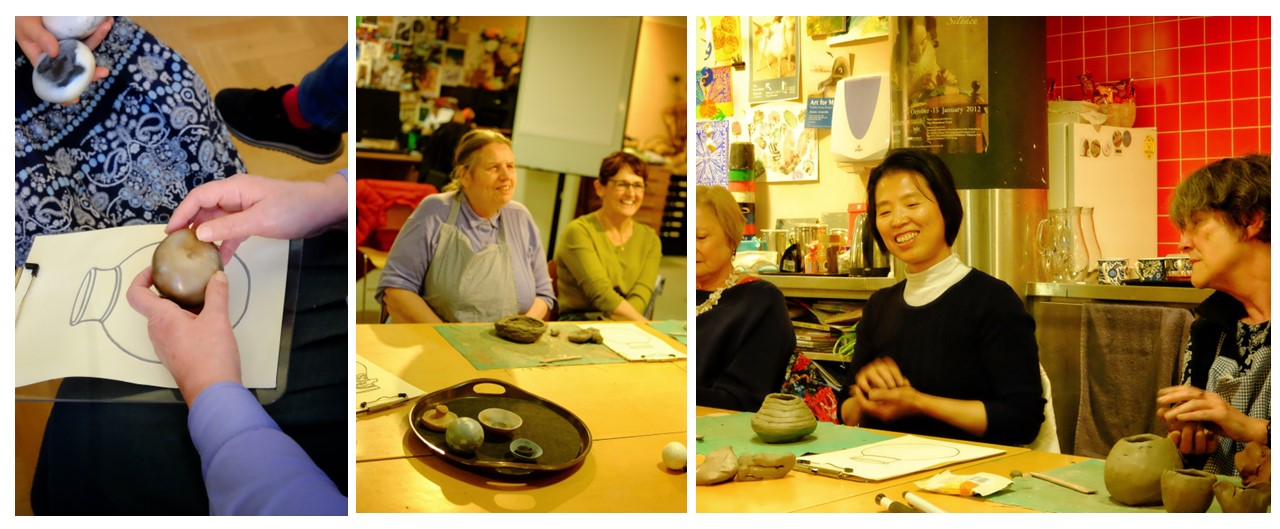
This programme of activities has become an established part of the Fitzwilliam’s public programme, having been developed over the last four years in collaboration with people who are blind or partially-sighted. In this whole day session people spent the morning in the exhibition exploring the content through audio descriptions supported by raised line drawings and using handling materials whose surfaces and shapes echoed those of the artefacts in the display. Moving through the show and spending time with three different thematic areas, provided people with a breadth of material to inspire and help shape their own making in the afternoon session in the museum art studio.
“Letting the art do the talking is easier said than done, when you can’t see or touch the art. Yet somehow, I was able to get a sense of Magdalene Odundo’s ceramics through listening to the fabulous spoken descriptions, feeling raised drawings of her work and grasping burnished stones which emulated the texture of her pots.”
– session participant
Sally Todd, who led this event, says of her response to the show and intent in setting up the workshop for the group that she was “immediately struck by Magdalene Odundo’s description of her ceramic work when she says, ‘My pieces are like people, they’re like my dancers.’ I wanted to share this sense of a collective ‘body’ with the blind and partially sighted group.”
Describing Magdalene’s work as “burnished glowing forms or vessels with suggestion of arching necks and swollen bellies seem to hover between the functional and the symbolic”, Sally was “especially drawn to Odundo’s analogy of the inside/outside space with that of our inner and outer selves and felt this was a rich spur for the group to work with, when starting to explore and shape the clay.”
Sally has a strong personal clay-based practice, so immediately had a great sensitivity to Odundo’s work. She combined this with her knowledge and experience as creative lead on the blind and partially-sighted programme. Sally says of this that the starting point throughout was “the ancient methods of pinch pots and coiling” and that through this in the workshop “clay forms began to emerge and became a vehicle for expression of self.” Sally concludes with the statement about the sheer magic of clay when she says, “I find it hard to separate the materiality of clay with that of alchemy, when witnessing the extraordinary forms created by the touch and sensibilities of our participants.”
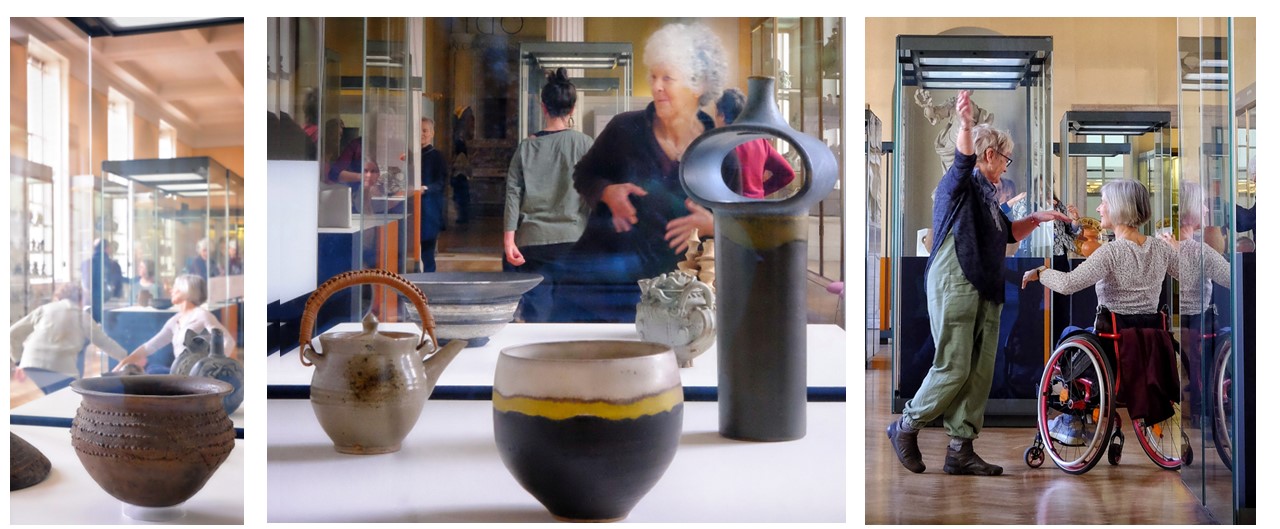
Final words
Feedback is always sought after events, seeking to find out what worked or not for those taking part and how we can, together, build this programme. The words below are from a participant who has been taking part in the creative programme for the last two and a half years, joining during lockdown, when sessions were held online.
“What raised this workshop to a level beyond a ‘touch tour’ and into something truly distinctive, is combining the above with a hands-on session with clay as led by a knowledgeable artist and capable Fitzwilliam team. Taking time to create my own work whilst chatting to other equally enthused partially sighted and blind attendees was both educational and magical.”
– session participant
